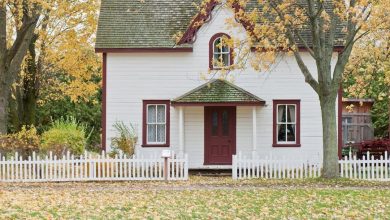How to Insulate My Home for the Winter Months?

Winter is just around the corner, and with it comes chilly temperatures and higher heating bills. If you’re looking to keep your home warm and cozy during the winter months, proper insulation is key. Insulating your home not only helps to maintain a comfortable indoor temperature but also reduces energy consumption and lowers utility costs. In this article, we will explore different ways to insulate your home effectively.
Identify Areas Needing Insulation
The first step in insulating your home is to identify areas that are in need of insulation. Common areas for heat loss include windows, doors, attics, and basements. Check for any gaps or cracks that may be letting cold air in or warm air out. By identifying these problem areas, you can focus your insulation efforts where they are most needed.
Seal Gaps and Cracks
Sealing gaps and cracks is an affordable and effective way to prevent heat loss in your home. Use weatherstripping or caulking to seal gaps around windows and doors. Inspect the exterior of your home for any cracks in the foundation or walls and seal them as well. By eliminating these small openings, you can significantly reduce heat loss and improve energy efficiency.
Insulate Windows and Doors
Windows and doors are major culprits when it comes to heat loss. To insulate your windows, consider using window film or thermal curtains. Window film can be applied directly to the glass and acts as a barrier against cold air. Thermal curtains are made of insulating materials and can help to keep warm air inside. For doors, installing door sweeps or using draft stoppers can prevent drafts and keep heat from escaping.
Add Insulation to Attics and Basements
Attics and basements are areas where a significant amount of heat can be lost. Adding insulation to these spaces can make a big difference in keeping your home warm. Insulating your attic can be done by adding insulation to the floor or roof, depending on whether it is a living space or not. For basements, insulating the walls and floors can help to retain heat. Consider using insulation boards or spray foam for maximum effectiveness.
Upgrade Your Insulation
If your home is older, it may be worth considering upgrading your insulation. Older homes often have inadequate insulation, which can lead to significant heat loss. Adding insulation to the walls, floors, and ceilings can improve your home’s energy efficiency and reduce heating costs. Consult with a professional to determine the best type of insulation for your home and the recommended R-value for your climate.
Insulate Pipes and Water Heater
Insulating pipes and your water heater is another way to prevent heat loss and conserve energy. Insulating hot water pipes can help to retain heat and deliver hot water more quickly. Insulating your water heater tank can also reduce standby heat loss. Both of these measures can save you money on your energy bills and ensure that your hot water stays hot for longer.
Consider Insulated Window Treatments
In addition to window film and thermal curtains, there are other types of insulated window treatments that can help to keep your home warm. Honeycomb blinds, for example, have a unique cellular design that traps air and acts as an insulating layer. These blinds can significantly reduce heat loss through windows and provide an extra layer of insulation.
Conclusion: Stay Warm and Save Money
As winter approaches, insulating your home becomes essential for staying warm and saving money on heating costs. By identifying areas needing insulation, sealing gaps and cracks, insulating windows and doors, adding insulation to attics and basements, upgrading your insulation, insulating pipes and water heater, and considering insulated window treatments, you can create a more energy-efficient and comfortable living space. Take the time to insulate your home properly, and enjoy a cozy and cost-effective winter season.




